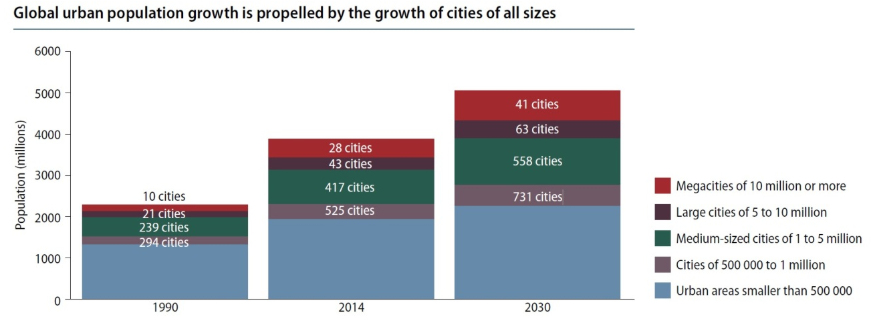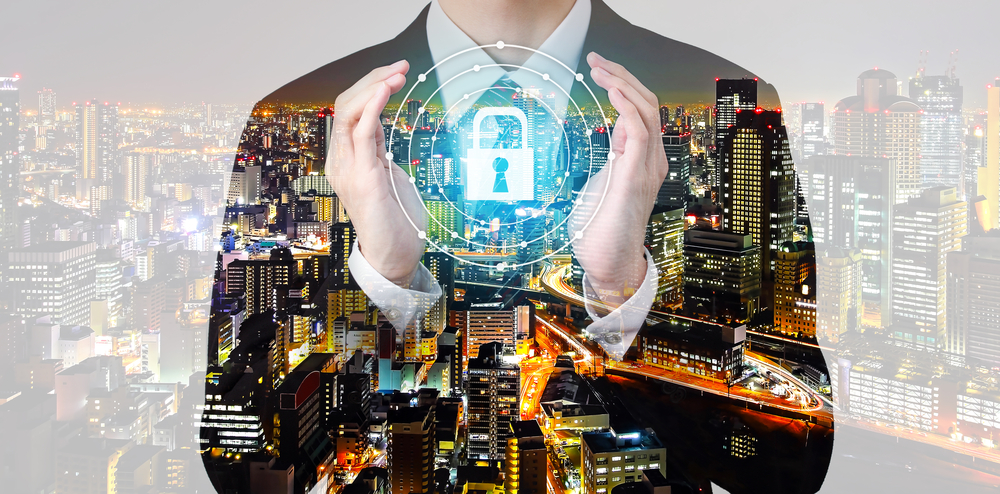We discuss the following topics in this blog:
- Urban cities defining the success and failure of human life.
- How can a Safet-City concept help?
- Lessons we can Learn from the Safest Cities of the World.
In addition to these topics, we shall also be answering the following FAQs:
- What is WiFi?
- What is Open RAN?
Contents
Is Global Urbanisation the Future?
We, human beings, are a curious case. For decades we have been flocking to urban centres in search of livelihood while we long for the peace and tranquillity of the country. As ambiguous as it may sound, urban centres despite all their shortcomings of limited resources, space and pollution, are in fact instrumental in determining the success of a nation. Cities (urban centres) are where businesses are born and thrive. They contribute significantly to the economic output of a country.
In 2015, urban areas contributed a total of 85% of the world’s GDP. – Source: New Climate Initiative
It is believed that the success or failure of cities will determine the quality of human life in the times to come. The United Nations Population Division predicts that the 56% of the world’s population living in cities today will rise to nearly 70% by 2050. The speed of growth of urban population is unprecedented and is most pronounced in cities of the developing world.
The disorderly, accelerating growth of developing world cities raises concerns that, unless met, could result in substantial destruction of value to both human life and economy. In light of this, the most fundamental element of urban management turns out to be its ability to provide safety.

Could a Safe City Concept Really Drive Resilience in the Face of Rampant Urbanisation?
Urbanisation has already shaped the developed world and is redefining developing countries. But does urbanisation guarantee safety?
Imagine life in a city where:
- A woman can walk alone at night
- In the presence of sufficient infrastructure in the form of parks, demarcated walkways and lighting
- She is part of an always-connected, secure ecosystem where banking, healthcare, education, and commerce are at her fingertips and her data is infallible to threats.
- The quality of the environment is also conducive in terms of overall air quality, hygienic conditions on ground and proper drainage
Having established the multi-faceted nature of a Safe City, an oft-forgotten aspect is ‘resilience’; one that enables a city to absorb shock and bounce back. Building such capabilities rests on reimagining urban development as a connected ecosystem where authorities, communities and individuals come together to develop and manage critical aspects of health, housing, food, and education, to withstand disasters, natural or otherwise.
Four Lessons we can Learn from the Safest Cities of the World
- Six APAC cities make it to the top ten in the world. How have they managed it? Certainly not geography. A closer look reveals a strong correlation between realising urban safety & resilience and strengthening the society on matters of digital, infrastructure, health and personal security.
- All the leading safe cities have one thing in common – they got their basics right. Be it access to comprehensive digital connectivity, high-quality healthcare, cyber security, sustenance planning, and uninterrupted education.
As Leo Tolstoy once said “All happy families are alike; each unhappy family is unhappy in its own way.” Those of us, who intend to emulate the examples of Tokyo, Singapore, Seoul, or Sydney, must first work towards defining the basic imperatives correctly and then proceed towards conditional imperatives.
- Thirdly, it is our collective duty to acknowledge that in spite of the multi-faceted nature of safety, there exists a very strong correlation between digital, infrastructure, health and personal security. According to a recent interview of a highly placed Tokyo city authority, their success has purely been the result of a wide range of collective reforms covering infrastructure development, smart transportation solutions, technology-enabled water management among many others. Another thread emerging from the Tokyo success story is the idea of “self-help, mutual-help and public assistance” which endeavours to enable individuals with information and means to help themselves in times of need, to be able to connect with their community to help them when such needs arise, and finally, be able to reach the concerned agency over a connected platform to see help from them as and when required.
- Transparency and accountability are essential in every aspect of urban security, from building infrastructure to developing a resilient, digitally-enabled network of applications and services. Having the right agencies/authorities/individuals work jointly towards enabling capable disaster-resilience, efficient resource usage, and social connectedness among citizens is essential to city-wide harmony and performance in times of crisis.
FAQs
What is WiFi?
Put simply, WiFi is a technology that uses radio waves to create a wireless network through which devices like mobile phones, computers, printers, etc., connect to the internet. A wireless router is needed to establish a WiFi hotspot that people in its vicinity may use to access internet services. You’re sure to have encountered such a WiFi hotspot in houses, offices, restaurants, etc.
To get a little more technical, WiFi works by enabling a Wireless Local Area Network or WLAN that allows devices connected to it to exchange signals with the internet via a router. The frequencies of these signals are either 2.4 GHz or 5 GHz bandwidths. These frequencies are much higher than those transmitted to or by radios, mobile phones, and televisions since WiFi signals need to carry significantly higher amounts of data. The networking standards are variants of 802.11, of which there are several (802.11a, 802.11b, 801.11g, etc.).
What is Open RAN?
From a deployment standpoint, we have Non-Standalone Mode(NSA), Dynamic Spectrum Sharing(DSS), and Standalone Mode (SA). The initial deployments of 5G NR are based on NSA standards, meaning the existing 4G LTE network will operate on the control plane, and 5G NR will be introduced to the user plane. This particular standard was introduced by 3GPP, keeping in mind the industry’s push to faster 5G services rollout while utilizing the existing 4G LTE infrastructure currently in place.
On the other hand, operators are also implementing Dynamic Spectrum Sharing (DSS) to accelerate the deployment cycle, which will reduce costs and improve spectrum utilization. In this standard, the same spectrum is shared between the 5G NR and 4G LTE, multiplexing over time per user demands. Lastly, we have the Standalone Mode (SA), which moves towards a complete 5G based network where both signaling and the information transfer are driven by a 5G cell.















